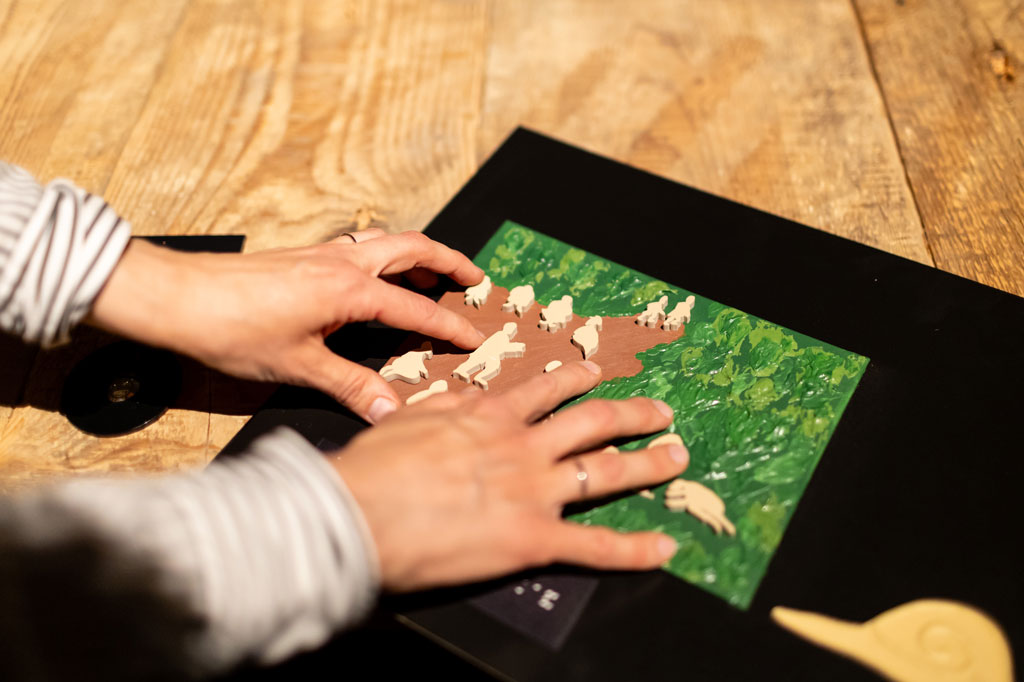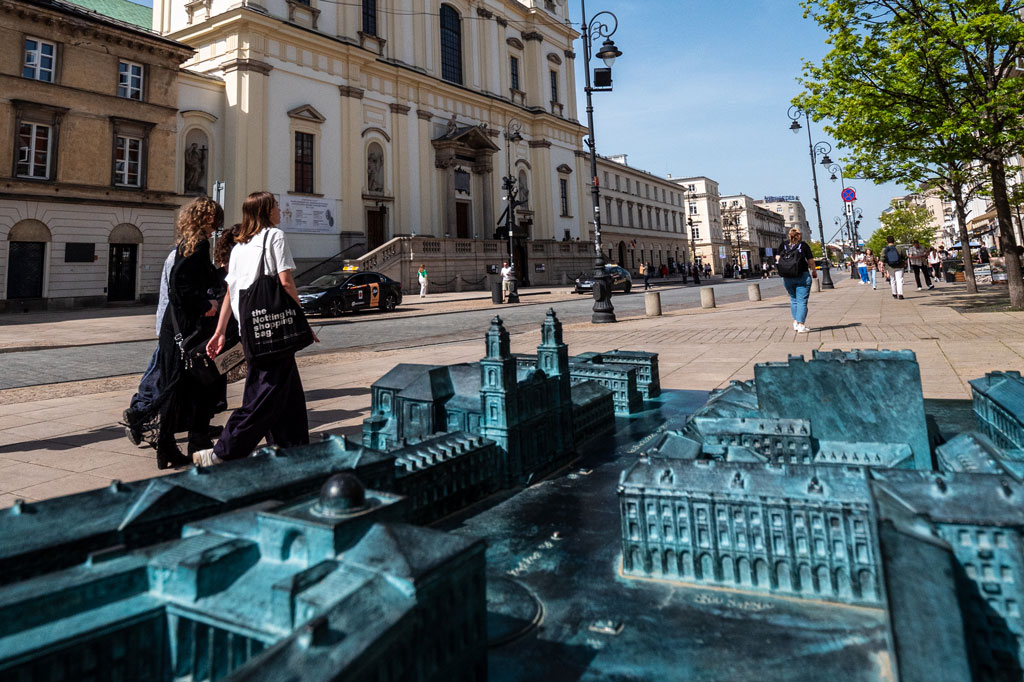Warsaw accessibility guide
Warsaw museums are becoming ever more accessible to people with different needs as a response to growing awareness of the need to ensure equal opportunities for access to culture. Over the past few years, many museum institutions in the capital have introduced changes aimed at enabling people with disabilities, including those with limited mobility, visual impairments, D/deaf people, and those on the autism spectrum or with communication difficulties, to visit and participate in cultural events.
There are many interesting museums in Warsaw covering a range of interests and compiling collections showing both old, historical exhibits and new, contemporary works of art. These museums attract people of all ages, as visitors can see not only the latest collections but also enjoy interactive exhibitions tailored to the perceptions of young audiences.
Many of these museums have existed for years and are housed in older, historic buildings, but there are also newer ones established more recently. We invite you for a tour of Warsaw’s five most popular museums, for which inclusivity is a priority, meaning they provide world-class accessibility, thereby ensuring unforgettable experiences to all visitors.
Audio descriptions and tactile materials at the POLIN Museum
Warsaw’s POLIN Museum of the History of Polish Jews is one of the institutions that pays particular attention to ensuring accessibility for people with diverse needs. It has been designed to take account of the needs of people with disabilities, and has introduced a number of solutions aimed at enabling equal opportunities in access to exhibitions, education and cultural events. The POLIN Museum offers audio descriptions for people with visual impairments. Thanks to these soundtracks, blind or visually impaired people can take full part in the exhibition. The audio descriptions depict the exhibits in detail, as well as giving the historical and cultural context of the exhibitions, which allows for a deeper understanding of the content being presented.
The POLIN Museum has ensured that tactile materials are an integral part of the exhibition, enabling visitors to better understand and enjoy the displays. The museum’s tactile graphics are carefully designed and constructed in such a way as to reproduce as accurately as possible important elements of the exhibits such as excerpts of documents, architectural details, everyday objects, and maps. Thanks to these tactile representations, blind and visually impaired people can better acquaint themselves with the materials presented and participate fully in the museum experience. POLIN uses typhlographics both for permanent and temporary exhibitions. Consequently, visually impaired people have the opportunity to experience the history and culture of Polish Jews more fully, engaging in the process of exploring exhibits and history through the sense of touch.
Tactile models of the Museum of Modern Art in Warsaw
Warsaw’s Museum of Modern Art (MSN) recently opened a new main building, where it also seeks to ensure accessibility for people with various types of disability, enabling them to participate fully in cultural life. This institution undertakes numerous activities aimed at equalising opportunities for access to art. One example of such activities is the preparation of tactile models of the building and staircase. The tactile model of the MSN is a carefully crafted representation of the building that allows people with visual impairments to become familiar with its structure. Thanks to its detailed execution, the model depicts the building’s proportions and characteristic architectural features, such as façades, window arrangement, entrances and other key details, enabling blind and visually impaired people to explore the museum building’s shape, spatial layout, and important details through touch, helping them to better understand the structure’s spatial composition and character.
At the Museum of Modern Art, the tactile model is one of the many amenities enhancing accessibility. The combination of the model and additional materials, such as audio descriptions, helps blind and partially-sighted people fully explore not only the appearance of the building itself, but also its functions and role in the context of contemporary art. In addition, visitors can count on the help of guides who specialise in working with people with visual impairments, as well as dedicated educational programmes.
Induction loops at the National Museum
The National Museum in Warsaw also tries to ensure full accessibility for people with various types of disability. One of the amenities that has been introduced to improve accessibility is induction loops.
Induction loops are systems that assist deaf or hard-of-hearing people, helping them better perceive sounds from exhibitions, lectures and other events organised at the museum. The induction loop system involves transmitting sound via an electromagnetic field directly to hearing aids or cochlear implants. As a result, people using these devices can hear sounds related to exhibitions or lectures clearly and without interruption, even in loud or acoustically challenging spaces.
The induction loops at the National Museum in Warsaw are especially useful for visits during which lectures, meetings with guides or other audio events requiring excellent sound quality are held in a particular room. Thanks to this technology, deaf or hard-of-hearing people can take part in these events without worrying about background noise or loss of sound quality. This solution increases the comfort of visits, enabling a fuller cultural experience.
Sensory backpacks at the Royal Castle
The Royal Castle in Warsaw, like other leading cultural institutions, has undertaken a number of initiatives to improve accessibility for people with various types of disability. These initiatives include sensory backpacks and a quiet room, which are particularly helpful for people with autism, sensory hypersensitivity, or other sensory needs.
Sensory backpacks are specially designed bags containing a set of materials and tools that help in the sensory exploration of space. At the Royal Castle, these backpacks are available for people with children who may have difficulties with sensory overload, which is common in museum spaces with intense levels of sound, colour and other stimuli. Sensory backpacks contain a variety of materials, such as:
- Anti-stress toys (e.g. squishies, balls, touch textures),
- Sound dampening headphones (for noise-sensitive people),
- Relaxation material to aid concentration and calm,
- Colouring and drawing kits to help express emotions and bring about state of tranquillity.
Sensory backpacks are available for rent at the Royal Castle ticket office and are primarily aimed at children, though they can also be helpful for adults who have difficulty with sensory processing in public spaces.
The quiet room at Royal Łazienki
The quiet room at Royal Łazienki is a place dedicated primarily to people with sensory hypersensitivity, children, autistic people, and anyone who feels discomfort associated with excessive stimulation in public spaces. It is a peaceful, quiet space where you can relax and take a break from the hustle and bustle, allowing you to recharge your batteries and carry on exploring more comfortably.
The quiet room is equipped with soft pillows, subdued lighting, and other features conducive to relaxation. It may also contain various materials, such as books, soothing toys or tactile elements that help people calm down and achieve a state of peace. This type of space is especially valuable for people with difficulty processing sensory stimuli, such as those with autism, anxiety, or attention issues.
The quiet room at Royal Łazienki is an example of ensuring the accessibility of cultural institutions for people with various sensory and emotional needs. Creating such spaces makes visits more enjoyable and enables full use of the museum and its cultural offer, ensuring rest and relaxation surrounded by nature and art.
Guides to the Museum of King Jan III's Palace at Wilanów in text that is easy to read and understand
The Museum of King Jan III’s Palace at Wilanów strives to ensure accessibility to all, including people who may have difficulty reading or understanding traditional texts. For such people, guides have been created in a text that is easy to read and understand.
These guides are designed to make it easier for people with reading difficulties (e.g. people with dyslexia, those with intellectual disabilities, or the elderly) to understand information about King Jan III’s Palace at Wilanów. The text in the guides is written in a simple, clear and understandable way, so that everyone, regardless of their reading skills, can learn about the palace’s history and attractions.
Wilanów Palace also offers other facilities to support accessibility for people with intellectual disabilities: specialised educational programmes tailored to the needs of neurodiverse people, including workshops that engage all the senses and allow participants to actively explore art and history, as well as materials tailored to people with different types of disability that aid better understanding of the exhibitions and the site.
More about accessibility at the Museum of King Jan III’s Palace at Wilanów
Tactile models with selected parts of Warsaw's urban space
A tactile tourist map has also been created in Warsaw, designed mainly for people with visual impairments. The models help blind and visually impaired people get to know the city and orient themselves in its space more easily.
The first three bronze models were installed in December 2023, at selected locations in the centre of Warsaw. The first and largest: ‘Warsaw—central plan’, is located on Castle Square (Plac Zamkowy) and presents the central part of the Northern City Centre, covering the area from the New Town, through the Old Town and Mariensztat, to the area of the Nicolaus Copernicus Monument. Another two models are situated on Krakowskie Przedmieście—one near the Adam Mickiewicz Monument, and the other close by the Nicolaus Copernicus Monument. Both depict parts of the medieval route, which is currently part of Krakowskie Przedmieście. Each model has descriptions in three languages: Polish, English and Braille.
Author: Wioleta Jóźwiak, Accessibility Specialist
For more tips on how to visit Warsaw sign up for our newsletter and stay up to date!
* By clicking the ‘Subscribe’ button you consent to receiving the newsletter from us and accept the Regulations of the ‘Newsletter’ service. We will process your e-mail address for the purpose of sending you the newsletter. The administrator of your personal data is the Warsaw Tourism Office. More information on the privacy policy and cookies policy and clause concerning the processing of personal data.








